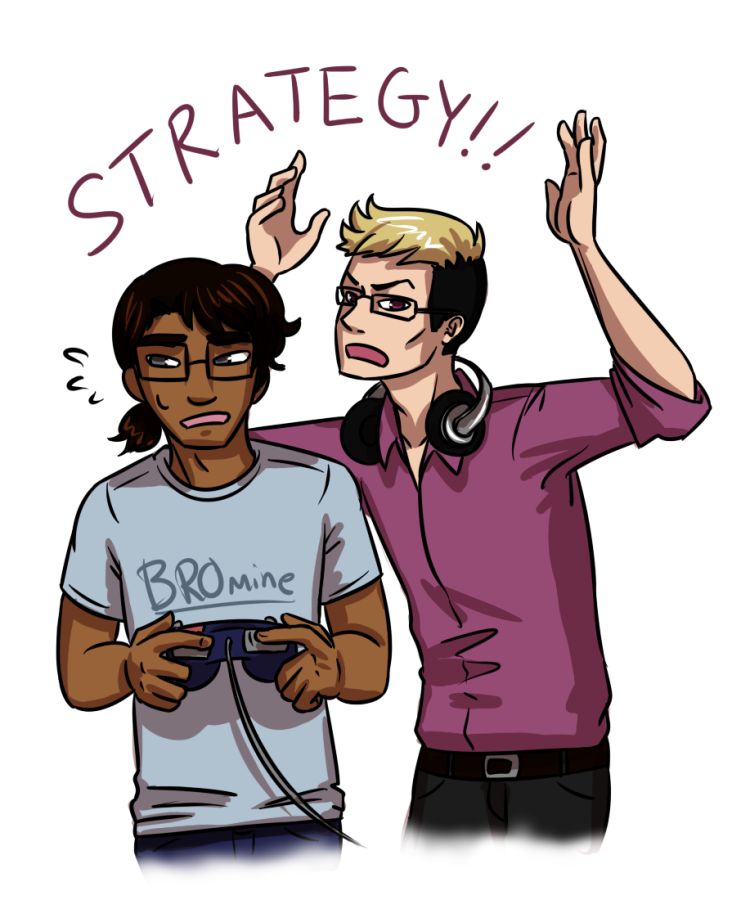The most elegant games are those which have the fewest and simplest rules, but the greatest complexity resulting from their interplay.
The Chinese game of Go epitomizes this axiom. In it, players alternately place stones on a grid, attempting to demarcate territory and to capture their opponents stones by surrounding them. It’s a simple formula, but the number of permutations it gives rise to are beyond the computation of even our most powerful computers. Conversely, a game with many complicated rules tends to be less strategically complex because the implications of each rule are rarely every fully realized in play; in part, this is because one rule will often undercut the consequences of another. This explains why people who play too much of Nintendo’s Super Smash Bros. turn the items off and refuse to fight on any map other than the flat, featureless Final Destination –– items and varied terrain introduce complications that actually detract from the already sufficient complexity of each character’s set of abilities. The more rules a game has, it seems, the less relevant each rule becomes.
For this reason, most of my favorite games tend to have a high ratio of rules to strategic depth. This is especially true of one game in particular: Puyo Puyo 2, a gem of a puzzle game that briefly enjoyed a degree of popularity among my friends sophomore year. I’ve heard it described as competitive Tetris, which, although slightly misleading –– if only because Puyo Puyo has much more depth to it than its Soviet cousin –– is not a bad encapsulation of how it plays. The screen is divided into two playing fields, one for each player; colored blobs, called puyos, fall in pairs of two and can be rotated and moved from side-to-side until finally coming to rest at the bottom of screen. When four blobs of the same color come into contact, they pop, and an equivalent amount of “garbage puyos” –– colorless nuisances that can only be rid of by popping adjacent puyos –– are sent to the opponent’s side. The game gets interesting when the disappearance of one group causes another to fall down and form another group of four, causing a chain reaction that dumps exponentially more garbage puyos onto the opponent, unless, of course, the opponent sets off a chain of his own whose garbage cancels out the imminent broadside. This leads to frantic, tennis-like matches in which mountains of garbage threaten each player alternately as each detonates larger and larger combos in response to the other, until, finally, one of them slips up and is buried alive (the game is won when your opponent’s puyos touch the top of the screen). This takes, at most, about two minutes. The mental gymnastics involved in keeping track of the chain you’re building become more and more demanding as you get better and more ambitious, and YouTube videos of lightning-fast Japanese tournaments give witness to the ridiculous extent to which one can become good at Puyo Puyo. This is the kind of game you could play for a lifetime, so long as someone was willing to play with you.
Sadly, Compile, the makers of Puyo Puyo 2 and its sequels, went under in 2003. But the rights to Puyo Puyo were sold to Sonic Team, a subsidiary of Sega, and Puyo Puyo games are still being made under the name Puyo Pop. A lot of the original game’s charm has been lost, unfortunately, and too many superfluous rules have been added, but most of these can be disabled, and the core gameplay has remained intact. Anyone who enjoys puzzle games should check Puyo Puyo out and rope their friends into it too. Whitman has a desperate need for competitive video games that aren’t Super Smash Bros., or whatever iteration of Call of Duty Activision most recently milked from the franchise’s long-desiccated teat.



